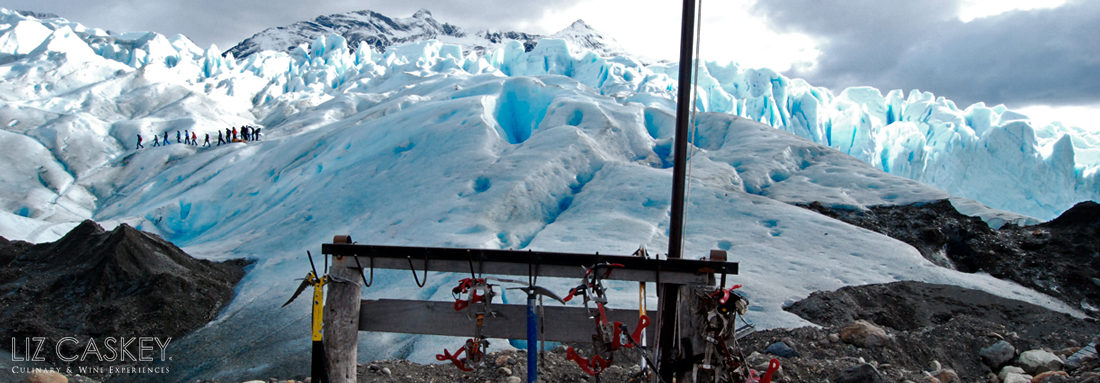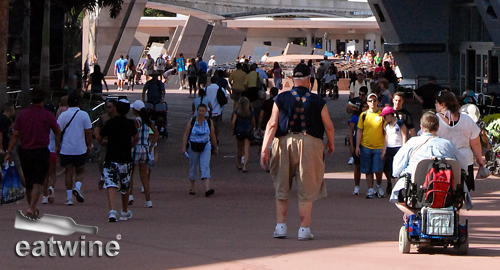The U.S. is a culture of convenience and self service. Here, the great hamburger empire, McDonald’s, was born along with fast food of all kind from the transfat culprits to salad bars in the supermarket. In fact, it’s amazing to think that Starbucks was able to shift a relaxing moment like sipping a latte in a café and turn it into “latte for the road”.
My last day in Texas, driving the huge highways between Dallas and Fort Worth, I was struck that from the highway, I could only see the signs of fast food restaurants like Wendy’s, McDonald’s, Burger King, and Starbucks. There they were, seemingly floating in the air high above like clouds for the hungry masses who spend hours and hours in their car every day. I was amazed to see the lines in the drive throughs. I watched people speed by me talking on their cell phone, shoving a big Mac in their face and driving at 70mph. Yes, us gringos are definitely the kings of convenience food. On this last trip, even though it really seemed like even though everybody’s obsessed with food, I saw that few people made the time to sit down to eat let alone cook.
I saw a lot of people eating in their car. When I worked on Wall Street, I had the unhealthy habit of eating in front of my computer working, without thinking that was something odd. I was shocked in even the most gourmet of supermarkets that there was a whole section of pre-cut and pre-washed vegetables. Right…save time chopping veggies so you can watch more TV. Is it really that hard to peel a carrot? On this last trip, I started to question what is the limit of efficiency and convenience. That is, with the perks of convenience, there’s also a dark side. What is that sacrifice? What is lost? And where does this attitude of constantly seeking convenience and efficiency come from? I have never seen it so dominant in any other country like in the U.S.
In his book, Fast Food Nation, Eric Scholosser explores the boom behind the fast food industry in the U.S. along with its history and “exporting” to the rest of the world. Fast food, processed food and convience. Let’s face it, the surge of the use of cars after the Second World War was the beginning of this era. U.S. cities expanded with non-human distances that only were accesible by car. Even today, the urban planning of every U.S. town, city, and greater metropolitan area still is car-centric. A total dependence on cars was generated and people spent more and more time in them to take care of daily business. If you have visited other areas of the States outside New York, Chicago, or San Francisco, you know it’s i-m-p-o-s-s-i-b-l-e to get around without any wheels. People measure distance in minutes, not miles. If there is no parking, all hell breaks loose. Obviously fast food adopted with drive throughs—and it’s not just McDonald’s. I couldn’t get over Krispy Kreme doughnut drive throughs and lines for coffee at Starbucks. Sure, why not order your venti frappucino and suck it down on the highway.
So what’s the dark side of all of this? The United States is one of the most obese countries in the world. Not fat, not overweight, OBESE. Deformed bodies are the majority, a self-inflicted condition by years of bad nutritional choices eating “convenience” food, a result of their own decision and ignorance. As far as I know, nobody puts a gun to your head before downing 36 ounces of Coke, a double whopper and supersize fries. What I also sensed on this trip is that people live very isolated—in their car, in their home, in their bubble. They come into contact with the masses at the bank, the mall, the supermarket, but there’s little sincere human contact. In many instances, the only contact is reduced to the cashier since it’s all self service, an almost robot-like interaction for the repetitive nature of the transaction. People are certainly nice, polite, and helpful but there are no relationships in the stores. No face-to-face, “Hiya Liz, it’s been a while, how’s your family?”. This goes even for exquisite places like Whole Foods. Everybody’s a number. Just one more in a sea of people.
This hit home during the Walt Disney World part of my trip where I participated as a Guest Chef in the annual Epcot Food & Wine festival. I couldn’t believe that our five-star hotel, didn’t include a decent breakfast in the rate. Nope, we had to walk down every morning to a mini-market to select our food from dispensers, and then get in another line to pay separately. The options were the typical U.S. breakfast food full of carbs and sugar: doughnuts, muffins, panqueques. Even the “natural” yogurt and fruit I had still had a list of ingredients I couldn’t pronounce. Among the other dozens of guests, we felt like cattle everything morning being given our ratio of pellets. It was not fun. This sensation was repeated again and again among the masses there where fresh food seemed to be a precious commodity.
So that’s the life of convenience in the USA? Drive everywhere, live alone in your car. Of course, everything you can ever imagine is at your fingertips–accesible, available, and most importantly, fast. You know what? I arrived home in Chile and made a beeline to see my caseros in La Vega. I walked there to buy fresh produce, not a single processed piece of food entered my home. Then, I walked down to Chinese Mark to see the gals who stock my Asian ingredients and make homemade tofu with only two ingredients: soy beans and water. After, I went to Tostaduria Talca to stock up on Chilean hazelnuts, quinoa, toasted peanuts, and other dried fruits and nuts. All from the countryside. Everything was five blocks from my apartment.
At each stop, everyone received me with a big smile and my first name. They asked me about my trip, what I was cooking, we chatted and caught up. I went home happy, not just to replenish my pantry and frig but the human interaction that took place. It filled my heart with something more—humanity. Maybe it takes more effort to wash and chop up all the ingredients for my own salad than heating up a can of soup for lunch. It does take a few trips to buy all my weekly supplies rather than pulling into a mega-market and shopping among the masses below flourescent lights. I shop on a human scale in every sense, using my own feet and senses. I don’t feel a number nor cattle, although perhaps, some will argue it is “inefficient”. Most important, I enjoy every minute of the process and those familiar faces whose businesses I support.
This is a plea to everyone in Chile, and South America, as the continent is booming and developing so rapidly. Please, let’s not loose that human scale and touch that still exists here in the search for modernization and the eagerness to look at everything that comes from the United States as golden. It’s not like that. There is a dark side and we must keep that present to make better, informed decisions.
This column was published in the November 2011 edition of Placeres Magazine in Chile. Its content was translated and adapted for this blog.














